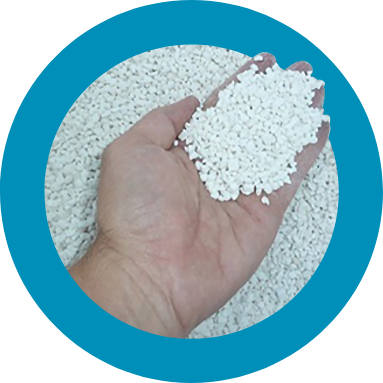FROM SEAWATER TO POTABLE & INDUSTRIAL USE
IDE develops advanced and efficient technologies for SWRO post treatment processes

Post-treatment systems are designed to adjust the final product’s minerals composition to accommodate water quality requirements.
Typically, these requirements are defined by local regulatory authorities of the state or by the requirements of clients for either drinking water or industrial use.
For drinking water purposes, it is required to meet and adjust the physical & chemical parameters such as pH, TDS, Turbidity, Hardness, Alkalinity and others in the final treatment process selected for post-treatment.
For industrial users, the requirements may be different from drinking water. The focus here will be on high log removal of viruses and bacteria.
The following methods are widely used in IDE SWRO plants:
Dissolution of Limestone as Calcium Carbonate into the RO permeate which is then passed through the reactors and becomes enriched with minerals. This process occurs with the assistance of Carbon dioxide (CO2) and/or sulfuric acid (H2SO4) which
Lime water (Ca(OH)2) and/or caustic soda (NaOH) are used for final adjustments of LSI, pH and hardness parameters
Both of these processes are widely used through different combinations to ensure maximal efficiency
Finally, water disinfection is done by dosing of sodium hypochlorite (NaClO) which also provides the residual free chlorine demand
Supporting a circular economy, and in order to minimize the use of chemicals, IDE plants feature the latest self-generation systems for chemicals. The on-site generation offers lower operating costs than commercial chemicals and provides high-quality chemicals.
The following self-generation systems are already implemented in some of IDE’s mega SWRO plants
Carbon di-oxide (CO2) generation: The production of CO2 can be typically obtained from a power plant source. The main processes for producing CO2 are extraction from flue gases, purification, and liquefaction. The recovery of CO2 from flue gas sources also contributes to reducing CO2 emissions to the atmosphere.
Sodium Hypochlorite (NaOCl): This is used for disinfection produced on-site by electrochlorination. By producing hypochlorite on-site and on-demand, the system eliminates concerns regarding transportation and storage. Due to its low concentration, the hypochlorite solution generated by the electrochlorination minimizes corrosion and chemical degradation during prolonged storage.
Lime water (Ca(OH)2) preparation: A new alternative lime water dissolution and clarification system was developed in order to improve the conventional system. The main purpose of the system is to prepare the concentrated and highly pure lime water solution that highly improves the final water quality. The new approach is based on state-of-art ceramic membranes that allow it to operate at high fluxes
Contact an IDE Expert
Would you like more information about our technologically advanced solutions?











